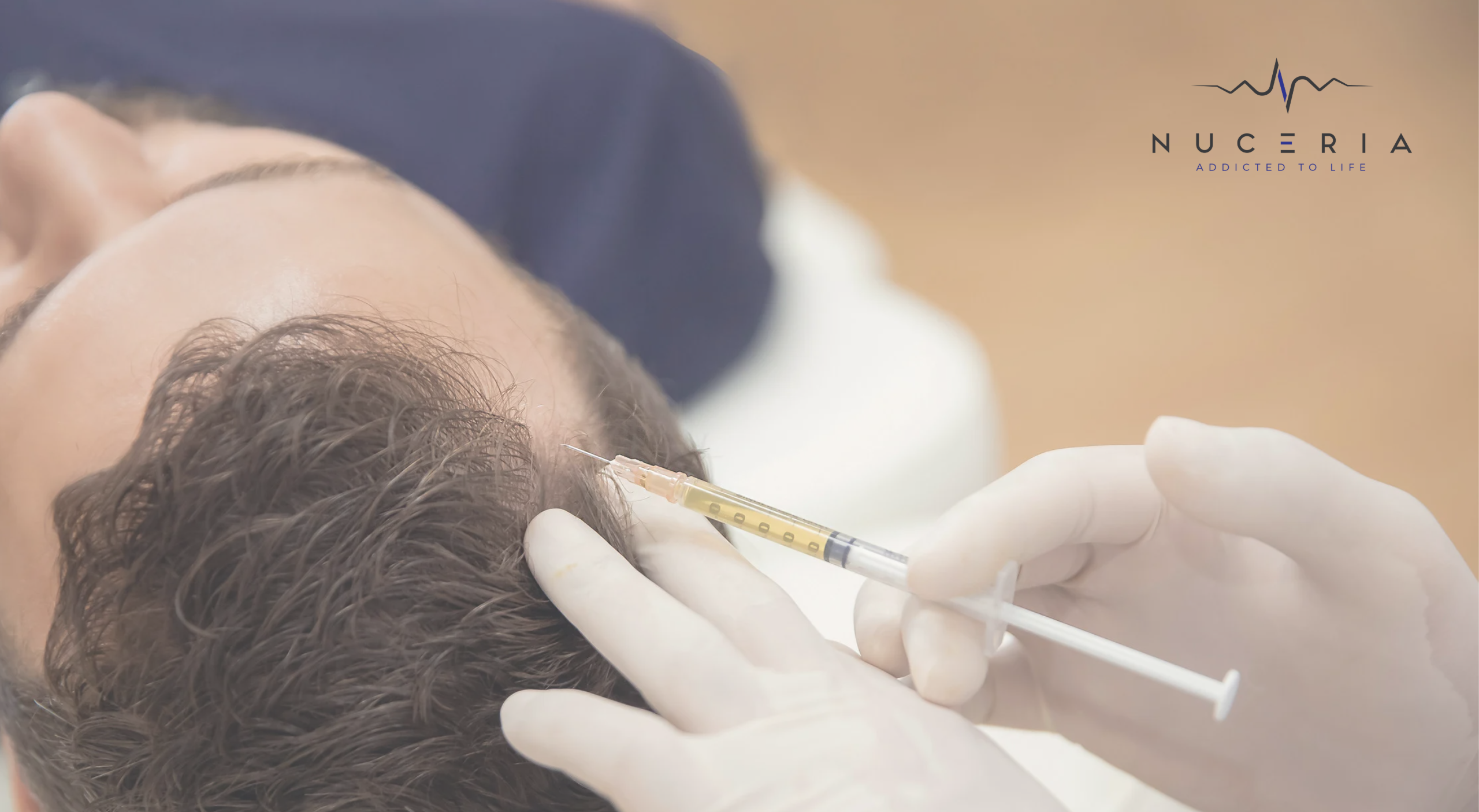HIFU for Skin Tightening: Advanced Non-Surgical Solution
High-intensity focused ultrasound (HIFU) is becoming increasingly popular as an effective, FDA-approved, noninvasive method for skin tightening and rejuvenation. This advanced cosmetic treatment utilizes ultrasound technology to combat the signs of aging, providing a safe and convenient alternative to surgical facelifts.
How HIFU Works for Skin Tightening
HIFU for skin tightening delivers focused ultrasound energy to the deep layers of the skin. The ultrasound waves penetrate the skin without causing damage to the surface. The waves generate heat at specific depths, stimulating collagen production and promoting tissue regeneration. This process helps tighten and lift the skin, resulting in a more youthful appearance.
Benefits of HIFU Skin Tightening
- Noninvasive: HIFU is a non-surgical procedure, meaning there are no incisions, stitches, or significant recovery times involved. Patients can often return to their normal activities immediately after treatment.
- Precision Targeting: The ultrasound energy targets only the skin's deep structural layers, stimulating collagen production while leaving the surface unaffected.
- Long-Lasting Results: The effects of HIFU can last for several months to over a year as collagen regenerates and tightens the skin over time.
- Minimal Discomfort: While patients may experience mild discomfort during the procedure, it is generally well-tolerated, especially compared to invasive surgical options.
Areas Treated by HIFU
HIFU can effectively treat various areas of the body. Practitioners commonly use HIFU to target the following regions:
- HIFU can tighten and lift skin on the face and neck. It reduces wrinkles and sagging in areas such as the forehead, eyes, cheeks, jawline, and neck.
- Décolletage: This treatment can improve the skin's texture and reduce wrinkles in the chest area.
- Arms: HIFU can help tighten loose skin on the upper arms.
- Abdomen: It can reduce skin laxity and improve the overall appearance of the abdominal area.
- Thighs: Practitioners use HIFU to firm and tighten the skin on the inner and outer thighs.
- Knees: The treatment can address sagging skin above the knees, improving their appearance.
Who Can Benefit from HIFU?
HIFU is suitable for individuals who are looking to:
- Reduce the appearance of wrinkles and fine lines.
- Lift and tighten sagging skin on the face, neck, and décolletage
- Improve skin texture and tone.
- Achieve a more youthful appearance without undergoing surgery.
The HIFU Treatment Process
A typical HIFU skin tightening session involves the following steps:
- Consultation: A consultation with a qualified practitioner to assess the skin and discuss the patient's goals and expectations.
- Preparation: The skin cleansing team cleanses the skin and applies a topical anesthetic to ensure comfort during the procedure.
- Ultrasound Application: The operator moves the HIFU device across the skin, delivering focused ultrasound energy to targeted areas. Depending on the treatment area, this process can take 30 minutes to 2 hours.
- Post-Treatment Care: Patients may experience some redness or swelling immediately after the procedure, but these side effects are typically mild and temporary.
Comparison: HIFU vs. Ultherapy
|
Aspect |
HIFU |
Ultherapy |
|
Technology |
High-Intensity Focused Ultrasound |
Microfocused Ultrasound with Visualization |
|
FDA Approval |
Approved for non-invasive skin lifting and tightening |
Approved for lifting the neck, chin, brow, and lines on the décolletage |
|
Treatment Depth |
Various depths, including SMAS (Superficial Musculoaponeurotic System) layer |
Various depths, including deep layers targeted in cosmetic surgery |
|
Comfort |
Generally less uncomfortable, feeling of heat or tingling |
More discomfort, pain relief methods often used |
|
Results and Downtime |
Results visible in 2-3 months, minimal to no downtime |
Optimal results in 2-3 months, minimal to no downtime |
|
Ideal Candidates |
Individuals with mild to moderate skin laxity, various body areas |
Individuals with mild to moderate skin laxity, especially neck, chin, brow, and décolletage |
|
Cost |
Generally more affordable |
Often more expensive due to combined imaging and treatment technology |
Comparison: HIFU vs. Endolift
|
Aspect |
HIFU |
Endolift |
|
Technology |
High-Intensity Focused Ultrasound |
Microfibrillar Diode Laser |
|
FDA Approval |
Approved for non-invasive skin lifting and tightening |
Not specified (varies by country) |
|
Treatment Depth |
Various depths, including SMAS (Superficial Musculoaponeurotic System) layer |
Subdermal layer, focusing on connective tissue |
|
Comfort |
Generally less uncomfortable, feeling of heat or tingling |
Can be uncomfortable, but generally tolerable with local anesthesia |
|
Results and Downtime |
Results visible in 2-3 months, minimal to no downtime |
Results visible in weeks, possible temporary swelling and bruising |
|
Ideal Candidates |
Individuals with mild to moderate skin laxity, various body areas |
Individuals with mild to moderate skin laxity, especially face and neck |
|
Cost |
Generally more affordable |
Varies, but can be more expensive due to minimally invasive nature |
Side Effects of HIFU
While HIFU is generally safe, there are potential side effects to be aware of:
- Redness and swelling are the most common side effects; they typically resolve within a few hours to days.
- Tingling or Tenderness: Some patients experience a tingling sensation or tenderness in the treated area, which usually subsides within a few weeks.
- Bruising: Mild bruising can occur, particularly in sensitive areas.
- Temporary Numbness: Rarely, patients might experience temporary numbness or a slight asymmetry because of nerve sensitivity, but this usually resolves independently.
Expected Results and Aftercare
Patients often notice some initial tightening effects immediately after the procedure. However, the most significant results typically develop over 2 to 3 months as new collagen forms and the skin gradually lifts and tightens. Some individuals may require multiple sessions a few months apart for optimal results.
Aftercare is straightforward. Doctors advise most patients to avoid direct sun exposure and use a gentle skincare routine to support healing. They may also recommend regular follow-up treatments to maintain the benefits of HIFU.
Analyze Cost
The cost of HIFU can vary depending on factors such as the treatment area, the number of sessions required, and the clinic's location. On average, HIFU treatments can range from $1,000 to $4,000.
Conclusion
High-intensity focused Ultrasound (HIFU) for skin tightening offers a revolutionary approach to noninvasive cosmetic treatments. With its ability to stimulate collagen production and rejuvenate the skin from within, HIFU provides a safe, effective, and convenient solution for those seeking to combat the signs of aging without the risks and downtime associated with surgery. People increasingly choose HIFU for skin tightening and facial rejuvenation as technology advances.
Frequently Asked Questions (FAQs)
Q: How long does a HIFU session take?
A: A HIFU session typically ranges from 30 minutes to 2 hours, depending on the size and specifics of the treatment area.
Q: Is HIFU painful?
A: Most patients report mild procedural discomfort, often described as a slight prickling or warm sensation. A topical anesthetic can enhance comfort.
How many HIFU sessions do you need?
A: Many individuals see the desired results after just one session. However, some may benefit from additional sessions depending on their skin condition and goals.
Q: What are the side effects of HIFU?
A: Common side effects include temporary redness, swelling, tingling, and mild tenderness in the treated area. These effects typically subside within a few days.
Q: When will I see the results from HIFU?
A: Patients can notice some initial tightening effects immediately after the procedure. The most significant improvements develop over 2 to 3 months as new collagen forms, leading to gradual lifting and tightening of the skin.
Q: How long do the results of HIFU last?
A: The effects of HIFU can last for several months to over a year. Doctors may recommend maintenance treatments to prolong the results.
Q: Can doctors combine HIFU with other treatments?
A: Yes, you can combine HIFU with other noninvasive treatments such as dermal fillers, Botox, and chemical peels to enhance overall results. Consult with your practitioner to create a customized treatment plan.
Q: Is there any downtime after HIFU treatment?
A: HIFU typically involves minimal downtime, allowing patients to return to their regular activities immediately. Some may experience mild redness or swelling, which usually subsides quickly.
Q: Who is an ideal candidate for HIFU?
A: Ideal candidates are those with mild to moderate skin laxity who wish to improve skin firmness without invasive surgery. A consultation with a qualified practitioner will determine if HIFU suits you.
Request an appointment here: https://mynuceria.com or call Nuceria Health at (305) 398-4370 for an appointment in our Miami office.
Check out what others are saying about our services on Yelp: Wellness Center in Miami, FL.







